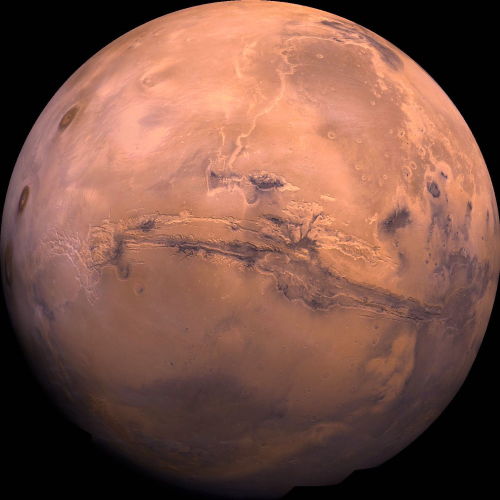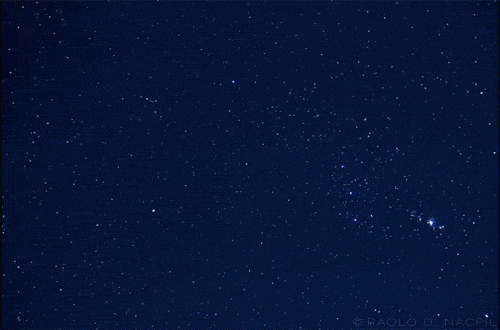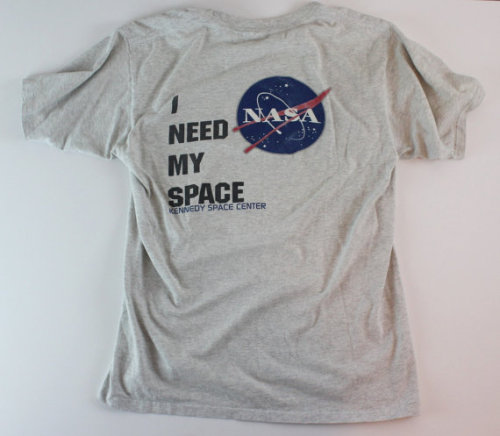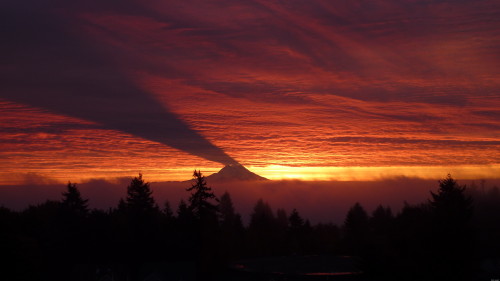Favourite APOD Of 2015, #10 (October): A Gegenschein Lunar Eclipse

Favourite APOD of 2015, #10 (October): A Gegenschein Lunar Eclipse
There’s so much going on in this photo! The Gegenschein is the faint, blueish glow you can see rising from the horizon and going behind the eclipsed Moon.
Runner-ups:

The Witch Head Nebula

Starburst Galaxy Messier 94
More Posts from Alitheastronomer and Others







Sharpest View of the Andromeda Galaxy, Ever.
The NASA/ESA Hubble Space Telescope has captured the sharpest and biggest image ever taken of the Andromeda galaxy — a whopping 69,536 x 22,230 pixels. The enormous image is the biggest Hubble image ever released and shows over 100 million stars and thousands of star clusters embedded in a section of the galaxy’s pancake-shaped disc stretching across over 40,000 light-years.
Use the ZOOM TOOL to view in full detail.
(WARNING: May cause existential crisis)

What’s Up for February 2016?
Five morning planets, Comet Catalina passes Polaris and icy Uranus and icy Vesta meet near Valentine’s Day.

February mornings feature Mercury, Venus, Saturn, Mars and Jupiter. The last time this five-planet dawn lineup happened was in 2005. The planets are easy to distinguish when you use the moon as your guide. Details on viewing HERE.
If you miss all five planets this month, you’ll be able to see them again in August’s sunset sky.

Last month, Comet Catalina’s curved dust tail and straight ion tail were visible in binoculars and telescopes near two galaxies that are close to the handle of the Big Dipper. Early this month, the comet nears Polaris, the North Star. It should be visible all month long for northern hemisphere observers.

There will be more opportunities to photograph Comet Catalina paired with other objects this month. It passes the faint spiral galaxy IC 342 and a pretty planetary nebula named NGC 1501 between Feb. 10 – 29. For binocular viewers, the magnitude 6 comet pairs up with a pretty string of stars, known as Kemble’s Cascade, on Feb. 24.

Finally, through binoculars, you should be able to pick out Vesta and Uranus near one another this month. You can use the moon as a guide on Feb. 12, and the cornerstone and the corner stars of Pegasus all month long.

For more information about What’s Up in the February sky, watch our monthly video HERE.
Make sure to follow us on Tumblr for your regular dose of space: http://nasa.tumblr.com

Well you're not wrong
true space facts
if u look up there it is

Hickson 91 in Piscis Austrinus by Johannes Schedler

Mount Rainier shadow casts on the sky at sunrise. It only happens when the sun rises farther to the south and has to be in the exact position to where Rainier blocks the first rays of morning light. (Source)
I wish I could live somewhere with a view like this.

Falling asleep most nights with the stars above and the cool air coming in through the open window. Sure is a fun way to live.
This is probably the most majestic playlist I've ever heard.


LEAVING EARTH. “When once you have tasted flight, you will forever walk the earth with your eyes turned skyward, for there you have been, and there you will always long to return.” For courageous travellers. Go forth and explore. [listen]
-
 iamwhatismissing reblogged this · 7 years ago
iamwhatismissing reblogged this · 7 years ago -
 fotogaceta reblogged this · 9 years ago
fotogaceta reblogged this · 9 years ago -
 inactivestarspangledbutt liked this · 9 years ago
inactivestarspangledbutt liked this · 9 years ago -
 peacedawgydawg liked this · 9 years ago
peacedawgydawg liked this · 9 years ago -
 pathognn reblogged this · 9 years ago
pathognn reblogged this · 9 years ago -
 pathognn liked this · 9 years ago
pathognn liked this · 9 years ago -
 letsfuckingtalkaboutspace reblogged this · 9 years ago
letsfuckingtalkaboutspace reblogged this · 9 years ago -
 alitheastronomer reblogged this · 9 years ago
alitheastronomer reblogged this · 9 years ago -
 marcylink liked this · 9 years ago
marcylink liked this · 9 years ago -
 marcylink reblogged this · 9 years ago
marcylink reblogged this · 9 years ago -
 charmingleah reblogged this · 9 years ago
charmingleah reblogged this · 9 years ago -
 glitchcosmos liked this · 9 years ago
glitchcosmos liked this · 9 years ago -
 macylafee liked this · 9 years ago
macylafee liked this · 9 years ago -
 macateallthespookings reblogged this · 9 years ago
macateallthespookings reblogged this · 9 years ago -
 macateallthespookings liked this · 9 years ago
macateallthespookings liked this · 9 years ago -
 charle1515 reblogged this · 9 years ago
charle1515 reblogged this · 9 years ago -
 denjiro reblogged this · 9 years ago
denjiro reblogged this · 9 years ago -
 denjiro liked this · 9 years ago
denjiro liked this · 9 years ago -
 pyrogina liked this · 9 years ago
pyrogina liked this · 9 years ago -
 elennare reblogged this · 9 years ago
elennare reblogged this · 9 years ago -
 a-real-life-bat reblogged this · 9 years ago
a-real-life-bat reblogged this · 9 years ago -
 thechangelingmedusa reblogged this · 9 years ago
thechangelingmedusa reblogged this · 9 years ago -
 vogosphere reblogged this · 9 years ago
vogosphere reblogged this · 9 years ago -
 denebskies reblogged this · 9 years ago
denebskies reblogged this · 9 years ago -
 jeffenstein reblogged this · 9 years ago
jeffenstein reblogged this · 9 years ago -
 brian-david-goblin liked this · 9 years ago
brian-david-goblin liked this · 9 years ago -
 honeybug99-blog liked this · 9 years ago
honeybug99-blog liked this · 9 years ago -
 void-street-ismovingyo-blog reblogged this · 9 years ago
void-street-ismovingyo-blog reblogged this · 9 years ago -
 soupspillsandcheese reblogged this · 9 years ago
soupspillsandcheese reblogged this · 9 years ago -
 yagamilayton liked this · 9 years ago
yagamilayton liked this · 9 years ago -
 pinkisbitter reblogged this · 9 years ago
pinkisbitter reblogged this · 9 years ago -
 pinkisbitter liked this · 9 years ago
pinkisbitter liked this · 9 years ago -
 philthesloth reblogged this · 9 years ago
philthesloth reblogged this · 9 years ago -
 jeffenstein liked this · 9 years ago
jeffenstein liked this · 9 years ago -
 akdjvhkadjvkajdhvkjahdvkjhadvjkh reblogged this · 9 years ago
akdjvhkadjvkajdhvkjahdvkjhadvjkh reblogged this · 9 years ago -
 mrvmt liked this · 9 years ago
mrvmt liked this · 9 years ago -
 karymeisnothome reblogged this · 9 years ago
karymeisnothome reblogged this · 9 years ago